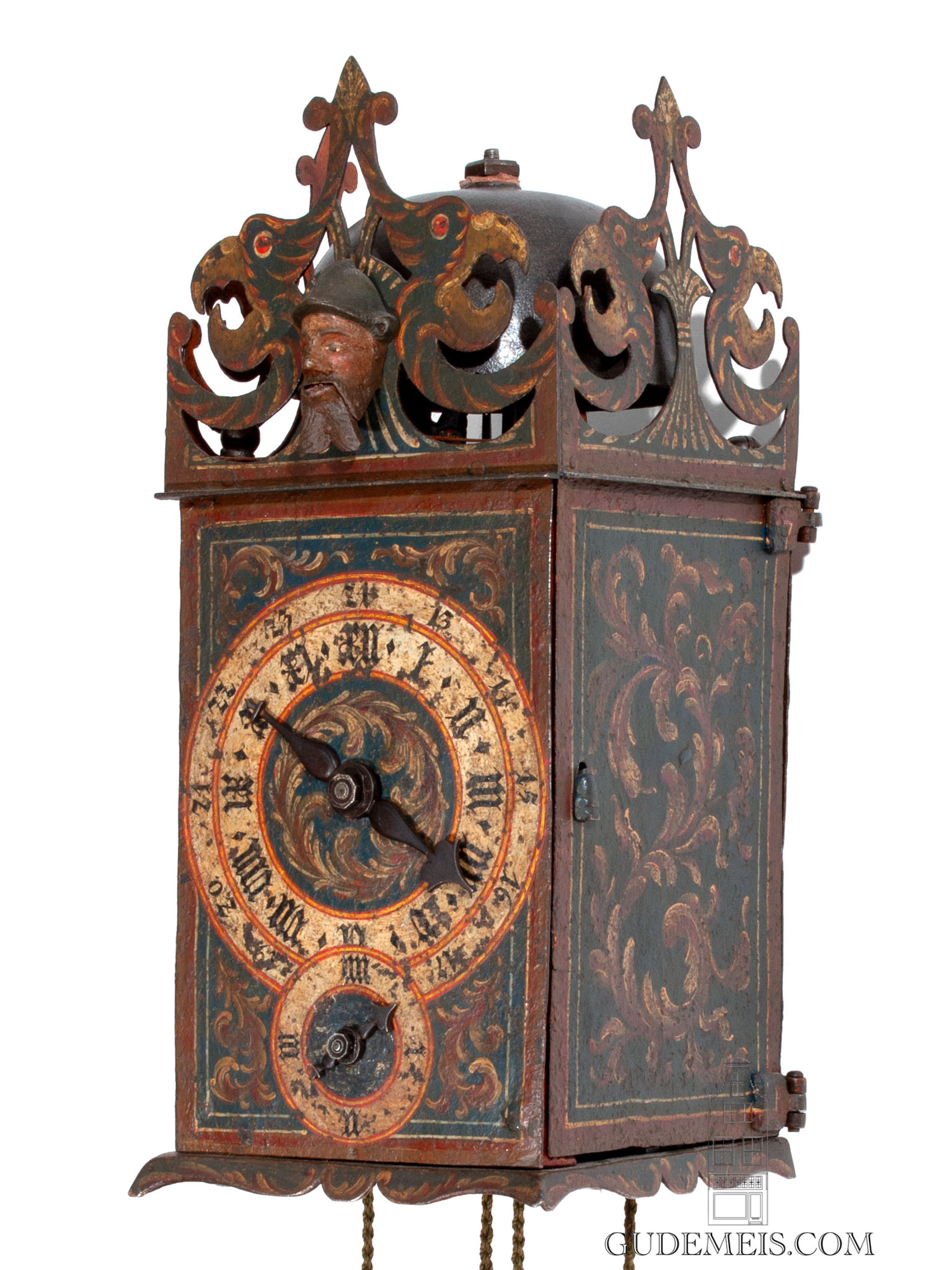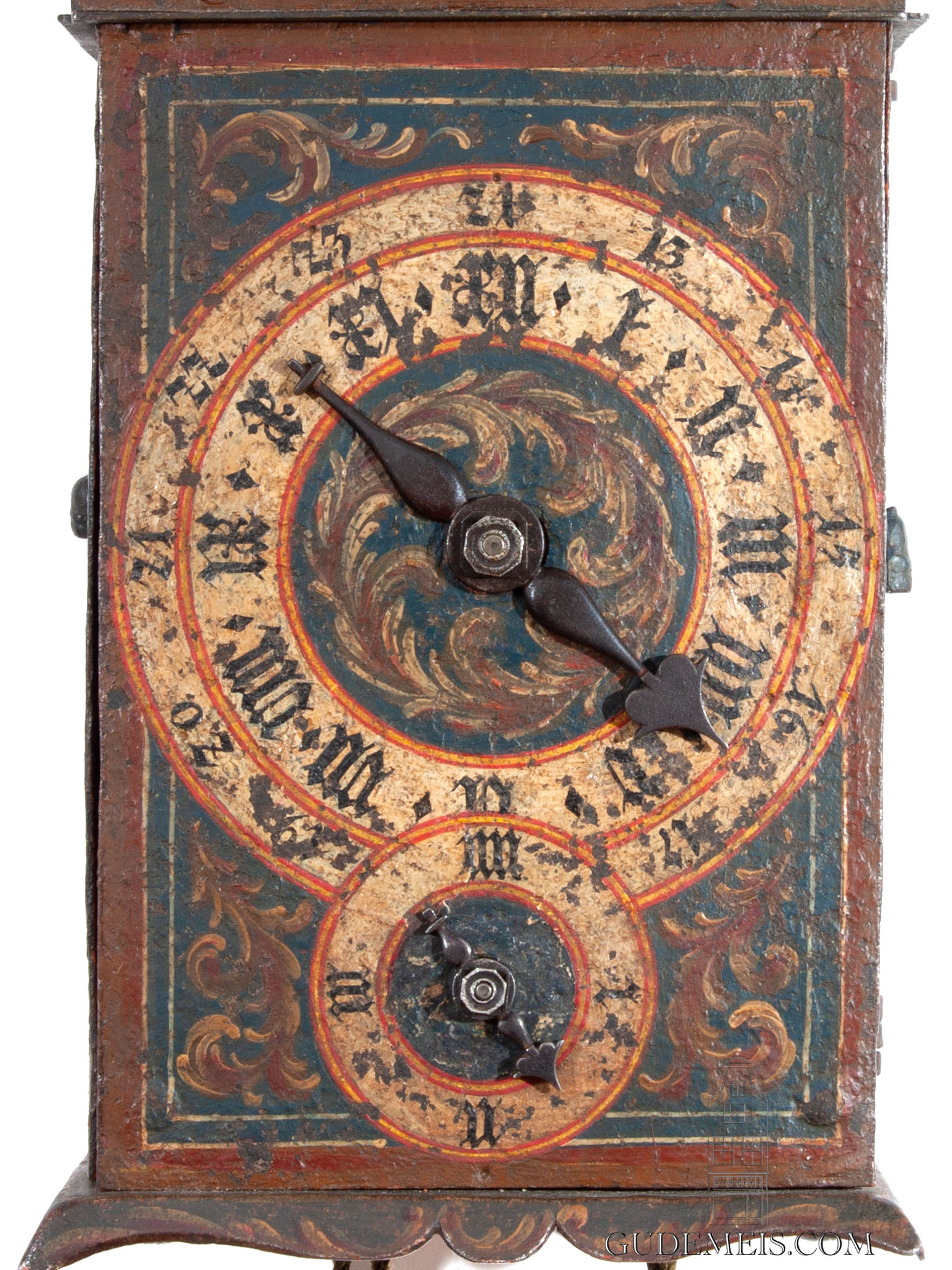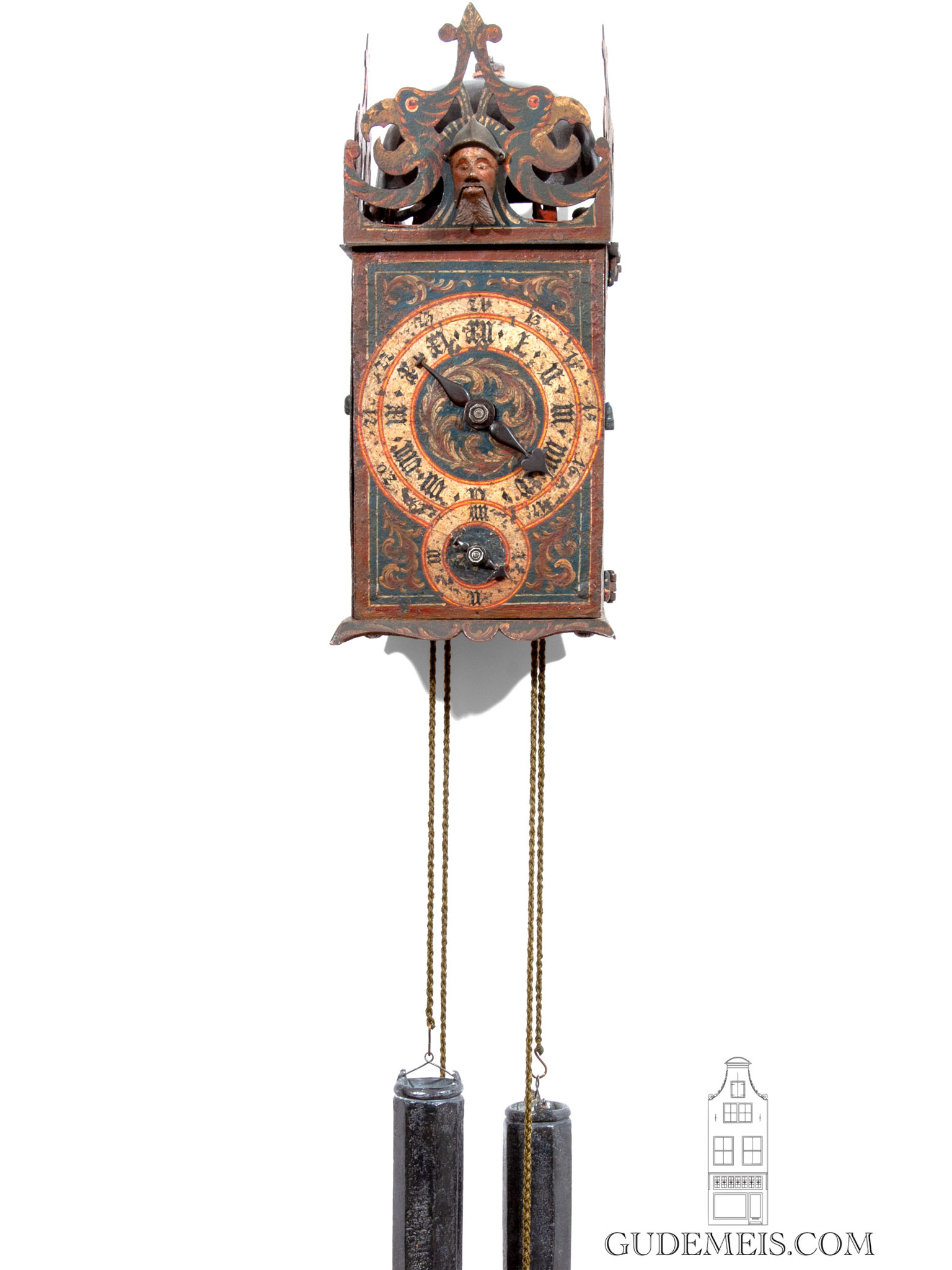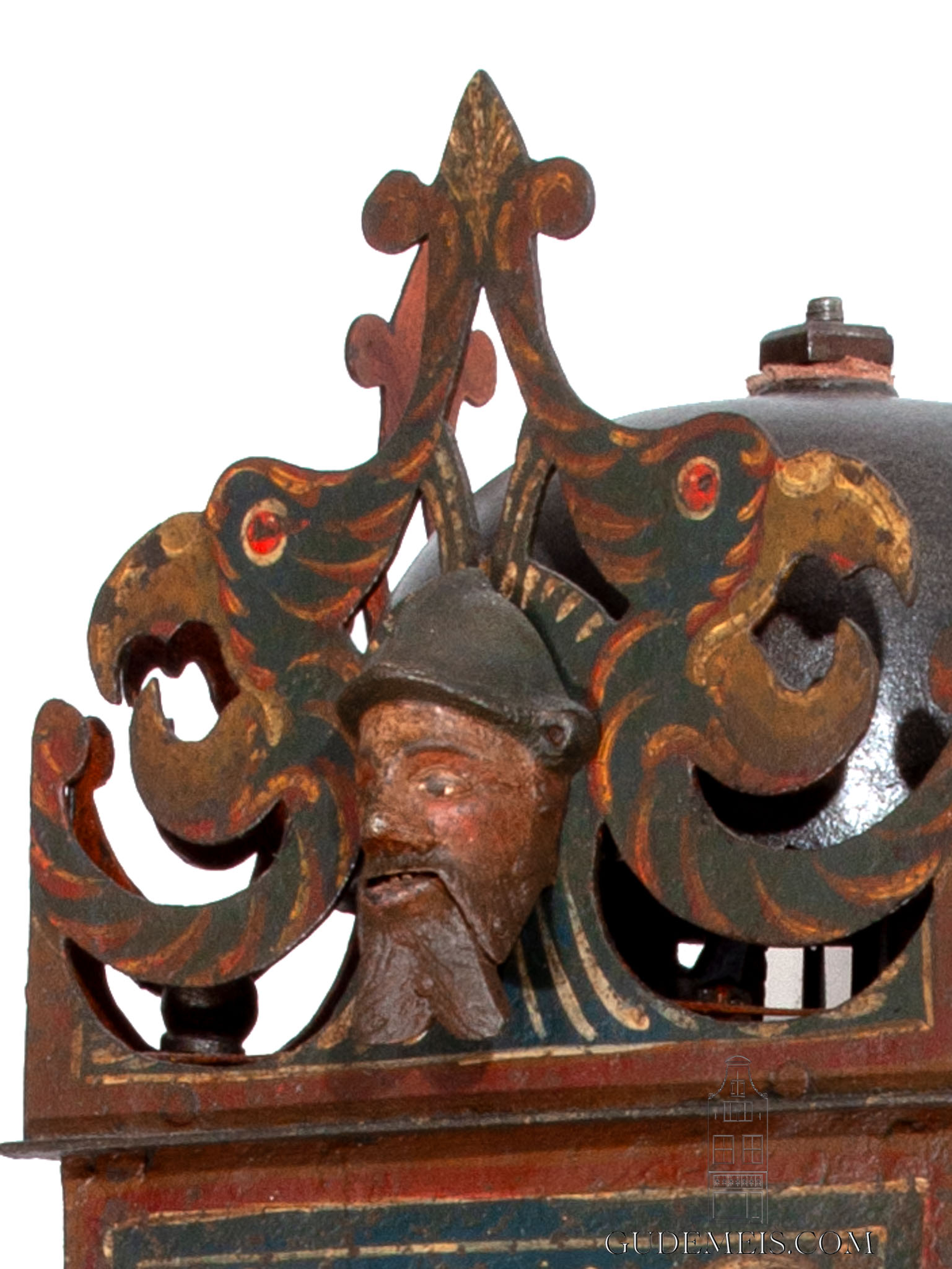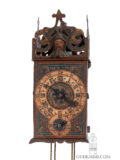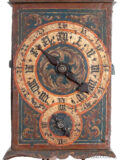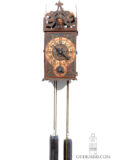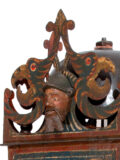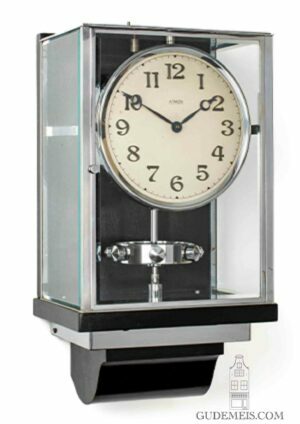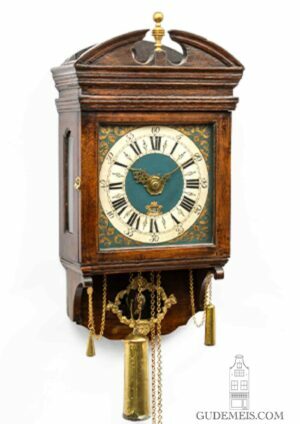A South German late gothic polychrome iron wall clock with automaton, circa 1590.
Description
Balance clock
For most people a pendulum is an integral part of a clock. This early piece still has a balance wheel which regulates the rate of the clock. In the early 17th Century Galileo Galilei discovered the isochrone quality of a pendulum. The fact that the oscillation of a pendulum is always regular independent of how wide the swing is. In 1656 Christiaan Huygens applied a pendulum to a clock movement making it much more precise than earlier clocks. Before this invention the rate of clocks was regulated by a foliot or in this case a balance wheel. The accuracy wasn’t very great and losing or gaining more than ten minutes a day wasn’t an exception. These balance clocks aren’t keeping time very well but as historical objects from another era these are very interesting. The attraction of this fine piece is enlarged by the automaton that it has. When the clock is striking, the mouth of the man’s head opens and shuts. Way back in the 16th Century it must have been quite a spectacle for all who saw it.
polychrome painted
The iron dial is polychrome painted. The larger chapter ring has Roman numerals for the 1-12 hours and Arabic numerals for the 13-24 hours. Below the large chapter ring is a smaller auxiliary chapter ring for the quarters. Both the single hour hand and quarter hand are made of iron. Surrounding and inside these rings the dial is embellished with plumes. The dial is surmounted by a frontfret incorporating two bird heads and centrally a mans face of which the mouth moves when the clock strikes.
balance wheel
The movement is fully made of iron which is typical for these early clocks. The clock runs on weights and has a duration of half a day. It is regulated by an iron balance wheel in combination with verge escapement. The rate can be changed by adjusting the weight that drives the going train, adding small lead balls. The clock strikes the hours on a surmounted bell by means of a countwheel. The striking work is connected to the mouth of the man’s head opening and shutting while striking.
The case
The polychrome painted iron case also has pierced frets to the sides embellished with bird heads and foliate scrolls above the doors. The lower rim is shaped. The clock is mounted on the wall by means of a hoop and spurs.
